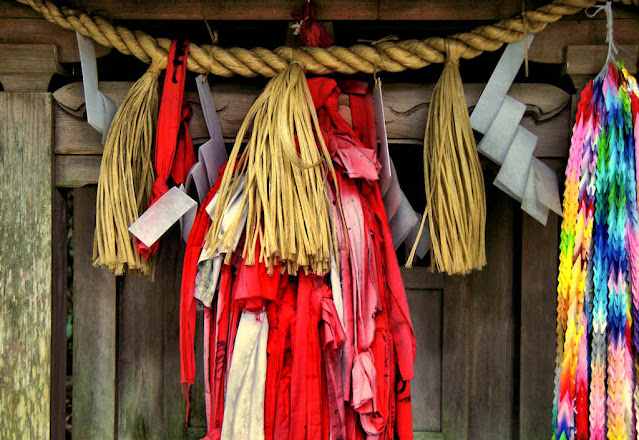The southern approach to Wakamiya Hachimangu Shrine in Nagahama, Kochi is through a long narrow ark, Chinjunomri.
Some way along the path you pass a huge statue of the samurai warlord Motochika Chosokabe, a hero to many in Shikoku.
For any of you who have walked the Shikoku pilgrimage, you will be well aware of Chosokabe as he destroyed a large number of the pilgrimage temples in his "unification" of Shikoku.
In 1560, as a young man under his warlord father, he took part in his first battle to attack nearby Nagahama Castle. On the eve of battle he camped in the grounds of Wakamiya Shrine and spent the night praying for victory.
Just north of here at the base of the mountain where Nagahama Castle stood is
Sekkeiji Temple, the family temple of Motochika, and next door is
Hata Shrine enshrining Motochika. His grave is also here.
After succeeding his father, Motochika spent ten years winning control over all of Tosa province.
He then spent 15 years taking over almost the whole of Shikoku but was finally undone by Hideyoshi.
The shrine was established in 1185 to protect the area which was land belonging to the Rokujo Wakamiya Hachimangu established in Kyoto by Monamoto Yoritomo, the first Kamakura Shogun.
It was established as a branch of Iwashimizu Hachimangu, the shrine south of Kyoto that two-thirds of all Hachiman shrines trace their origin to.
Hachiman had been adopted by the Minamoto as their tutelary deity and so was very popular among samurai.
After Chosokabe's military success following prayers here, this shrine became particularly renowned for prayers for victory.
The architecture here is unique, and said to have been designed by Chosokabe himself.
When seen in plan view is is said to resemble a dragonfly, considered a victorious and auspicious insect for samurai.
There are numerous secondary shrines within the grounds including a Tenjin Shrine which they list as enshrining Amenomikumari, a female kami connected to estuaries and irrigation. They mention also Sugawara Michizane.
There is also a Kojin Shrine, a Misa Shrine, a Sanja Shrine, and a Hayatosha.
The previous post in this series exploring things seen and encountered between the temples on the Shikoku Ohenro pilgrimage was the nearby
museum to Ryoma Sakamoto.







































